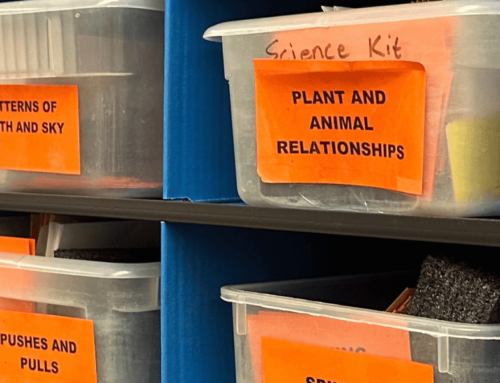I know that each and every day educators work very hard in our classroom learning and teaching efforts. It is important to acknowledge that we want to provide rich experiences that get our students to think deeply.
I was recently introduced to Peter Liljedahl’s book, Building Thinking Classrooms in Mathematics (2021) by NWESD Regional Math Coordinator, Tina Mott. In his book, Liljedahl sets out to get kids thinking. Some may believe we just need to give students a good juicy mathematics problem to create a problem-based classroom. Peter writes,
“Yes, if we want students to think then we need to give them something that will engage and propel them to think. But, this is far from enough. If nothing else in our practice changes, then thinking tasks will just frustrate the students and aggravate the teacher. We have to also create a culture where thinking is not only valued but also necessitated– we have to build a thinking classroom.” (Liljedahl, 2021, pg. 279)
After reading the book, I sat down with Tina to discuss it. Tina pointed out that we’ve all seen a student that seems to hide in the back or doesn’t engage in group work. And according to Lilijedahl it is important to shift students into engaged active thinkers, we, as educators, need to shift away from our institutional norms. While we attend to equitable and effective teaching practices (NCTM Effective Mathematics Teaching Practices) we should consider structural changes that support a change in behavior.
Peter Liljedahl suggests that everything from the way students interact with problems, the arrangement of a classroom, and grading practices, encourages student behaviors such as “mimicking” and student anonymity within the classroom, rather than deep thinking.
- First, to get students away from simply looking for the answer or “mimicking” a procedure, provide rich, non-curriculum tasks. Kids want to think deeply, so engaging them in non-routine tasks, several times, provides students the opportunity to have positive experiences with productive struggle and increases their self-confidence and self-efficacy.
- The next essential step is to set up collaborative groups using visibly random grouping. The author suggests using “visibly random groupings”. This structure led to an increased willingness to collaborate, the breaking down of social barriers, increased enthusiasm for mathematics learning, and reduced social stress.
- Next, get students standing and working on vertical non-permanent surfaces. The author’s research suggests that when students are in visibly random groups and standing, they get started in their thinking tasks much sooner and remain engaged much longer than if seated. The benefits for this structure is that it reduces the anonymity of students, increases knowledge mobility as groups can see the work of other students, and it makes it easier for teachers to see the thinking going on with every group.
There is still so much more to consider when creating structures that increase student thinking.
Reference: Peter Liljedahl. (2021). Building Thinking Classrooms in Mathematics. Corwin Press Inc.
Join us for an opportunity to learn and explore more through a year-long book study with presentations from Dr. Peter Liljedahl. Sessions begin September 9th.




